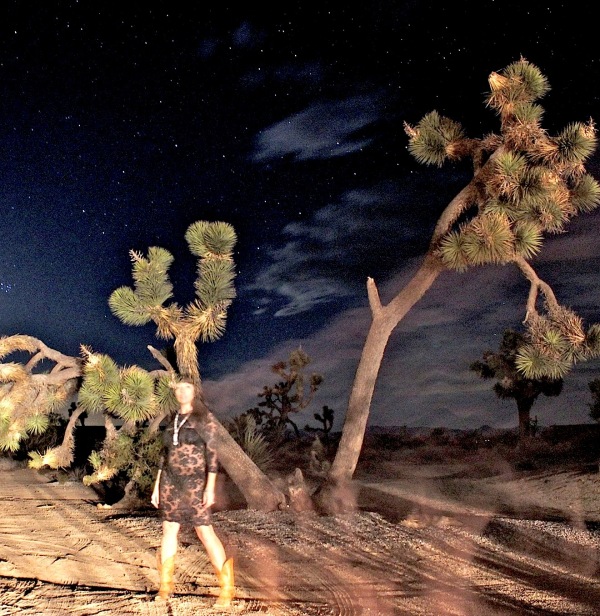 BY JONATHAN VALANIA Though she currently resides on the high plains of the Mojave Desert near the “rock n’ roll heaven” of Joshua Tree, acclaimed filmmaker Kate McCabe was born and bred in the Northeast, went to school at Girls’ High and attended University Of The Arts. It was a U Arts project — a Russ Meyers pastiche called Go Go Rama Mama, told from the perspective of a go-go dancer making the rounds for tips, shot through with all the low-rent tragedy and comedy such venues engender — that marked her coming out as a filmmaker. From there she headed west to study experimental animation at California Institute of the Arts under the tutelage of noted experimental animator Jules Engel, and never really looked back. She developed an arresting visual style marked by the innovative use of time-lapse photography, which she used to color her eerily oblique meditations on the post-millennial alienation, dislocation, and isolation in the celebrated 2004 experimental short, Milk And Honey. Smitten with the then-flourishing stoner-rock scene in and around Joshua Tree, she bought a house in Yucca Valley and put down roots. It was there she met and befriended Kyuss drummer Bjork Brant and the two collaborated on Sabbia, a trippy feature-length film wedding McCabe’s otherworldly desert visuals to Brant’s psychedelic rock. To make ends meet, she bluffed her way into an executive chef gig at an upscale rehab in the LA area. Between film projects she created the popular sketch comic book Mojave Weather Diaries. McCabe aptly describes her latest film, You And I Remain, as an “apocalyptic lullaby.” The film — colored with mesmerizing time-lapse footage of swirling clouds over the Mojave and arresting sun sets along the coast of Big Sur, and scored with hypnotic sound design by Jason Payne of Nitzer Ebb — vibes with the epic loneliness of life on Earth after the human race is wiped out by its own apocalyptic carbon footprint. McCabe will be showing her films during a self-curated retrospective at PhilaMOCA on Wednesday night at 7:30 PM.
BY JONATHAN VALANIA Though she currently resides on the high plains of the Mojave Desert near the “rock n’ roll heaven” of Joshua Tree, acclaimed filmmaker Kate McCabe was born and bred in the Northeast, went to school at Girls’ High and attended University Of The Arts. It was a U Arts project — a Russ Meyers pastiche called Go Go Rama Mama, told from the perspective of a go-go dancer making the rounds for tips, shot through with all the low-rent tragedy and comedy such venues engender — that marked her coming out as a filmmaker. From there she headed west to study experimental animation at California Institute of the Arts under the tutelage of noted experimental animator Jules Engel, and never really looked back. She developed an arresting visual style marked by the innovative use of time-lapse photography, which she used to color her eerily oblique meditations on the post-millennial alienation, dislocation, and isolation in the celebrated 2004 experimental short, Milk And Honey. Smitten with the then-flourishing stoner-rock scene in and around Joshua Tree, she bought a house in Yucca Valley and put down roots. It was there she met and befriended Kyuss drummer Bjork Brant and the two collaborated on Sabbia, a trippy feature-length film wedding McCabe’s otherworldly desert visuals to Brant’s psychedelic rock. To make ends meet, she bluffed her way into an executive chef gig at an upscale rehab in the LA area. Between film projects she created the popular sketch comic book Mojave Weather Diaries. McCabe aptly describes her latest film, You And I Remain, as an “apocalyptic lullaby.” The film — colored with mesmerizing time-lapse footage of swirling clouds over the Mojave and arresting sun sets along the coast of Big Sur, and scored with hypnotic sound design by Jason Payne of Nitzer Ebb — vibes with the epic loneliness of life on Earth after the human race is wiped out by its own apocalyptic carbon footprint. McCabe will be showing her films during a self-curated retrospective at PhilaMOCA on Wednesday night at 7:30 PM.
PHAWKER: Let’s start at the beginning. You’re from Philadelphia. Where did you grow up?
KATE MCCABE: I grew up in Northeast Philly, and my mom had a dancing school in Frankford under the church street L stop. So I’ve kind of been somehow on Broad street going to Girl’s High my whole life and U Arts. Broad Street was like my main artery as a kid.
PHAWKER: And what was the trigger for you deciding to pursue filmmaking, specifically experimental film-making?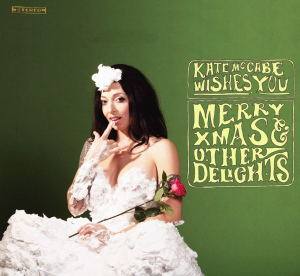
KATE MCCABE: Yeah the worst career ever. I was just always visual and always writing and my mom, like a crazy Italian lady from Frankford that she was, somehow encouraged me, and I started with photography in high school, and then when I went to U Arts I discovered animation for the first time and the whole idea of the moving image and then of course adding sound to it was just what kind of pushed me there. I worked with people and actors first but that’s what you’re supposed to kind of learn to how do, like structural filmmaking and real narrative stuff. But it was more the abstract that got me going. So yeah I’ve been doing it a long time now.
PHAWKER: For people that don’t know about your first film, Go-Go Rama Mama, give us the backstory.
KATE MCCABE: Go-Go Rama Mama is definitely a special film. It was my thesis film for U Arts for me to graduate. I had friends who worked at a go-go club called All In The Family in the on 13th street — it’s long gone now — so it became kind of this place we would go to be supportive of the dancers, and I was able to start working there. It’s a place that was kind of frozen in time it was a total ‘70s kind of juke joint and the best thing about All In The Family was that it had Christmas decorations on the walls year round. that was their décor. I don’t know if you remember there were like little nutcrackers on the side of the stage and stuff. The way I saw it, in one way women were empowering themselves and then there was also like drugs and then there was every art school girl who ever went to Dirty Frank’s kind of worked there. They trusted me, and I made my film there: it’s shot from the perspective of a dancer collecting her round of tips in an afternoon. All the actors who play customers talk directly to the camera, so the audience becomes the girl working there. It’s kind of a comedy, but it’s also kind of sad.
PHAWKER: So what prompted the move out west?
KATE MCCABE: Well I was really getting into animation in terms of following these abstract animators and the people who came from that school, they basically made moving paintings. Decades before there were music videos they were doing cool paintings on films to jazz.
PHAWKER: Who were some of these filmmakers you’re talking about?
KATE MCCABE: Norman McLaren, Len Lye and Jules Engel who founded the experimental animation program at Cal Arts though he broke off from Disney. Like Disney kind of made Cal Arts, this character animation school, and Jules kind of made this little rebel school like in the basement. I’m glad I got in because I didn’t have another plan. And it was there that I actually learned all that old, obscure but beautiful way of combining images in-camera.
Now I do a lot of time lapse stuff — the new film is mostly time lapse stuff but you have to do it with an animation motor because it’s not on film so I have – this is super nerdy but it’s good to be a girl and a nerd sometimes – it’s called an Intervalometer and it’s a motor I can hook up on my camera that allows me to do long exposures and all kinds of time lapse. I worked for the master who did it in LA for a long time so I learned from a guy who worked on Return of the Jedi.
PHAWKER: So doing these time lapse things, you literally just set up a camera and sit there and babysit it for like eight hours until the sun comes up and goes down or whatever?
KATE MCCABE: Yeah, It’s good to monitor it in case there’s anything wrong or the camera blows over or you need to switch out a battery or something. It’s best to con a friend into coming with you so you have someone to play gin rummy with. You bring a book and some cards and you hangout and let the light do what it does.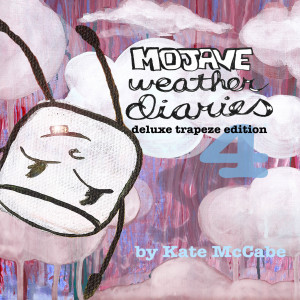
PHAWKER: Are all of your films shot on film or is some of the stuff digital?
KATE MCCABE: I’d say 80% of my work is shot on film. I don’t always get to finish it on film now so that’s kind of the compromise I have. I have to finish some of it digitally I work with the labs that do that.
PHAWKER: Isn’t that really expensive – eight hours on film?
KATE MCCABE: Okay let me explain that. So if I’m shooting a shot for eight hours in might only be twenty seconds of film.
PHAWKER: Okay right so it’s not constantly filming, it’s taking a shot at certain intervals, like every 10 seconds or 20 seconds it snaps an image, is that the deal?
KATE MCCABE: Yes exactly hence the term intervalometer. The key to understanding animation and film is understanding that it’s just a series of still images playing persistently. Once you know that, like you can fuck with it. I’m sorry that’s not an appropriate term, I would not say that in a classroom — “and then you would fuck with it, students.’ But can change the rhythm and timing. I can decide how long the sunset going to take, a minute or ten seconds, so you’re condensing time. This is super nerdy I’m sorry I didn’t know you were going to ask me technical questions.
PHAWKER: Well you didn’t say anything was off the record Kate.
KATE MCCABE: Oh no, call me out. Full nerd. Do it.
PHAWKER: So you currently live near Joshua Tree?
KATE MCCABE: Yes, in the town next door where you go food shopping. Technically I live in Yucca Valley. I’m ten miles from the Joshua Tree Inn, the motel where Gram Parsons died.
PHAWKER: Have you ever stayed there?
KATE MCCABE: I’ve never stayed overnight there but I’m really good friends with the owner and I did a bunch of pop-up restaurants there.
PHAWKER: You mentioned in your bio that you also worked as a chef.
KATE MCCABE: Yes. I actually studied cancer foods and macrobiotics. My mom had breast cancer and then when I moved out here bands would always be coming through I just kept cooking for people. I moved out here to make a feature film.
PHAWKER: Which was?
KATE MCCABE: It’s called Sabbia. So that’s what brought me out here and when it got released I also got divorced so I literally had to start over from nothing and I ended up basically buying a chef jacket and bluffing my way into a job as the executive chef at a fancy mansion drug rehab for three years. I managed to fake it for three years. They’re great people and I learned a lot about sobriety. So I’ve been doing food off and on for the past few years because there’s a need for it out here but it’s not my main thing. Making films is. I want my films to end up in a nice museum someday.
PHAWKER: Let’s talk about Milk And Honey. You’ve said you made the film about feeling like an outsider — like an astronaut hovering over the moon — as an East Coast person transplanted to California. Whole different way of life, whole different vibe.
KATE MCCABE: Absolutely I feel like Los Angeles is a place where everyone’s chasing their dreams, whether they want to be actors or musicians, they’re all there for similar reasons. We’re all in our cars, we’re isolated, so Los Angeles can seem really unfriendly. So you’re like in an adventure but you’re kind of trapped in your own little sanctuary. The Apollo 11 soundtrack just made sense to me as a metaphor for what that sense of isolation – it’s a beautiful sense of isolation, like we’re happy astronauts, we’re not sad astronauts, but yeah it just seemed like the chasing of the dream also kept us all disconnected out here.
PHAWKER: I love the bit where ground control is reading the news to the astronauts in space and the big news is that there was an oatmeal eating contest back on Earth.
KATE MCCABE: I love you. I love that you heard it.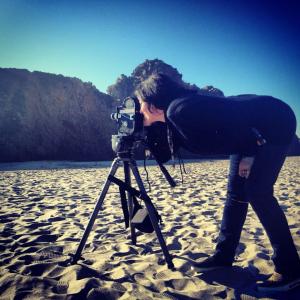
PHAWKER: Fucking hilarious. And then the astronauts are being good eggs about it like “We’d like to get Aldrin in that contest, pretty sure he’d win” It’s just funny how it’s a strange combination between this sanitized reality that they present to the public and the sanitized reality that ground control presents to the astronauts to keep them from freaking out. There’s Vietnam, riots, black panthers, Manson murders are about to go down — and the news that NASA shares with the astronauts was that there was an oatmeal eating contest.
KATE MCCABE: Exactly and a lot of people don’t catch that and some people do and they just think “Oh how cute astronauts eating oatmeal.” And they’re not getting that they’re being kept from real news. I really appreciate that you caught that. That’s actually awesome.
PHAWKER: There is a bit of a Saddam Hussein’s speech: “Use your swords, you’ll be remembered by history.” That was sort of the pep talk he was giving the Iraqi army, as I recall, right on the eve of the invasion of a completely meaningless war.
KATE MCCABE: I had a moment in LA when the first bombs were falling and I was listening to them in my car and someone pulls up next to me and they’re like listening to hoopty music, like am I the only one listening to this? Another isolating feeling. I’m the only one listening to the bombs dropping. It just seemed like, “God does anyone care that this is happening?”
PHAWKER: What year did you move out there?
KATE MCCABE: 1998.
PHAWKER: And you immediately glom onto the stoner rock scene, going to shows and meeting people in the scene.
KATE MCCABE: Yeah that’s a good summary. I heard those songs in Philly, and as I was moving cross-country I think that first Queens of the Stone Age record came out. This to me was like the real sound of California — not “Hotel California.” Queens of the Stone Age was the living breathing sound of California at least at that time.
PHAWKER: You just dissed “Hotel California,” I have to mount a strong defense to the contrary. I just think that’s a really spooky song. The lyrics are really beautiful and haunting. I’ve been there: I’ve driven that dark desert highway, warm smell of colitas rising up through the air. They nail that. ‘You can check out any time you like, but you can never leave.’ Scared the shit out of me as a kid. Still does. Deathless song.
KATE MCCABE: Alright, so fine I will make a concession. I love that song. But I’ve been in California for seventeen years, when that song comes on the radio is, without fail, when I’m having the darkest day, the deepest most profound crushing disappointment or something and that song will come on and I’ll just be like ‘Why?!’ It’s a love-hate relationship.
PHAWKER: So getting back to your arrival out west, you become friends with Bjork Brant from Kyuss. How does this turn into you doing a feature length film with him?
KATE MCCABE: I met him at the Troubadour, and he let me use some of his old unreleased four track stuff for Milk And Honey and when I sent him the film like a year later he was like, “Whoa you finish stuff what the fuck?” I guess he’s used to people talking shit in bars. Anyway, he saw the film and he’d never really seen anything like that before and he always wanted to make a visual album and he just said, ‘You’re the one. You’ve got the chops you have the vision. I’ve never seen anything like it. If I let you loose in the desert what will you do’ and I was like ‘What do you need?’ So we collaborated in a way where I kind of had a lot of freedom to shoot anything. He drew me maps for when he couldn’t be around and I would drive around with his old high school friends and I would drive through the desert where they used to have the generator parties and all those guys were like tripping out.
PHAWKER: They would just have big blowout parties out literally in the middle of the desert in the middle of the night powered by generators and all these proto-stoner rock bands would play and it was remote enough that the cops never came.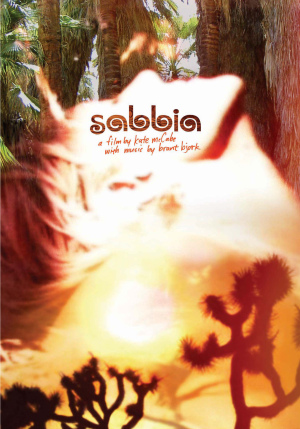
KATE MCCABE: Yeah as far as I know. No one’s shared stories of parties getting busted. I heard of a party getting broken up because of a wildfire and everyone had to book.
PHAWKER: So the movie you made with Bjork Brant is called Sabbia. In the opening scene of Sabbia with the pretty woman in the prairie dress and cowboy boots connecting all of the extension cords together across the desert and fields of cacti etc. and then connecting it to a little close and play record player. Was that sort of a tip of the hat to that tradition of the desert parties?
KATE MCCABE: Yeah absolutely you know like the sheer desire to bring music wherever you go. That’s what they were doing too in bringing people together bringing themselves together and yeah absolutely that’s a tip of the hat. That woman’s name is Nectar, she went to high school with Brant and Josh [Homme]. So she became another kind of special connection back to the history of the place. Nectar, and her last name is Rose, super Cali hippy name.
PHAWKER: Totally. So how do you wind up in Joshua Tree?
KATE MCCABE: I’m working on Sabbia, shooting a snowstorm at Joshua Tree. And I just fell in love. It has seasons like Philadelphia does but without the blizzards. It’s like all the sudden I saw the sky and wondered what the fuck I was doing in LA. It didn’t make sense to me anymore. My ex-husband was working for Viva La Bam so he was in Philly half the year anyway, so I was like should we buy a house in Fishtown or should we buy a house in the desert and I chose desert and I think I chose right, no offense to Fishtown.
PHAWKER: No I envy you, the desert is awesome. What happened with Sabbia after if was done, how it was received? I think you mentioned in the emails you sent me that that was the most high profile thing you did or what you’re most well known for.
KATE MCCABE: Yeah because Brant is bigger in Europe than he is home and so the film went overseas and now I have fans in Helsinki and Italy and England. They track what I’m doing. But that film broke me and getting divorced broke me and having to start as a chef when I had a Master’s Degree I’m like in a drug rehab for three years. So I kind of had to start over. I didn’t really make any money on the film but I was gaining this kind of slow notoriety. I thought with that film I’d be able to get an agent and I would have a rep I would be doing music videos regularly and it was the hardest thing I’ve ever done in LA in terms of sending out reels and cold calling companies and researching ‘Do they have women? Do they even have women?’ And that’s a big fucking deal in LA because there really aren’t. I would just try to be like, ‘You need a woman like me!’ It was heartless so I had to get a real job.
PHAWKER: So tell me about The Mojave Weather Diaries, what are they?
KATE MCCABE: Mojave Weather Diaries came about as I discovered desert female writers who homesteaded in my neighborhood near Joshua Tree. They would write and publish their poems and journals in Desert Magazines in the 1940’s and 50’s. My films take long to make so I write short stories or paint in between. These sketchbook comics became my way to add my voice to the history of women in the Mojave desert as a modern homesteader. It’s become an almanac like Poor Richard’s or a sailor’s log except the stories are about catching lizards doing push ups on a hot day in June and how I made out under the canopy of the perseid meteor showers. I’ve done four so far and the last I was able to release with a reading at Andrea Zittel’s High Desert Test Sites. All my books are limited edition art objects but the desert ones are unique because they kept the Sabbia fan base and the fans of the desert internationally keep collecting them and keeping up with the other art I’m doing.
PHAWKER: One more question I had about Milk And Honey. There are a couple recurring visual motifs, one is what I can only describe as little tornadoes of light. I’m assuming it’s like somebody holding a light and spinning it around and a really long exposure.
KATE MCCABE: One of my favorite techniques with photography has been light painting and it’s where you leave the shutter open for a long time and move a light source and the light makes a streak. I discovered I can do that like frame by frame I can make that in animation. I actually did a whole entire film where I shot people like that and I lit them with little flashlights and drew light all around them so it’s become this technique that I just love. It’s done with a long exposure in camera. I love that you said tornadoes of light, that’s beautiful.
PHAWKER: There’s another film series you are going to be showing called The Love Letter Series. I saw one of them, Darling, which was a woman reading a letter to her lover in French describing her faults and quirks which are very artsy and charming: making up fake Latin phrases, being a stupid American, putting bacon on her veggie burgers.
KATE MCCABE: I feel like my greatest achievement with doing the love letter series was that I was making stuff out of my own trash. Those movies are made out of all my outtakes basically. I have a 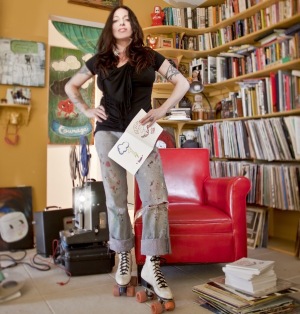 neighbor who’s French who I could pay in chocolate and she did the translations and we sat in my kitchen and recorded it. Even though I was broke I could still make films out of my leftovers and for me it was about keeping busy and making art.
neighbor who’s French who I could pay in chocolate and she did the translations and we sat in my kitchen and recorded it. Even though I was broke I could still make films out of my leftovers and for me it was about keeping busy and making art.
PHAWKER: Okay so then let’s talk about your latest film, You And I Remain — which you refer to it as an ‘apocalyptic lullaby’ which is a very lovely phrase and, having seen the film, an apt way of describing it. Tell me about the premise of the film, tell me about the, I’m probably pronouncing this wrong, the Anthropocene, is that right?
KATE MCCABE: The Anthropocene is the geological epoch when human activity begins to have a serious global impact on the planet’s ecosystems, and there’s mass die-offs. So that is why there are no people in the film — it’s about the post-human era, or a taste of it. You know about the giant meteor that wiped out the dinosaurs? Well, we are both that meteor and the dinosaur.
PHAWKER: All these climate change denialists like to make fun of anyone who believes the scientists are right is some kind of treehugger, and making fun of people for wanting to ‘save the planet.’ Really though, the rallying cry should be ‘Save The Human Race,’ because the planet’s gonna go on long after we’re gone. We’re just one of many specs in time on this planet. It will look nothing like it does now, the climate will be all different, it will probably be much more inhospitable. The sea will be acidic and there’ll be all kinds of poisonous plants and all kinds of critters that sting and bite but there’ll be no people. It’s not even a matter of make the planet nice for the bees and the birds, we’re talking about a matter of grave existential threat to the human race.
KATE MCCABE: You’re totally spot on. I mean I was reading the book The Sixth Extinction by Elizabeth Kolbert and one of the scientists she talks about thinks that rats might evolve to be the dominant intelligent life form in a thousand or a million years because we’ve brought rats to places where they didn’t belong on our boats that sail around the world. He thinks that rats will outlive all of us and might out-evolve us.
PHAWKER: You And I Remain is a beautiful film through and through, but the most visually arresting moment in the film, for me, was that white floatation device or raft floating empty in a pool. I mean, the whole film is absent of any kind of humanity, it sort of a imagines the earth without any people. That shot is just really arresting and it gives you a glimpse of what lonely place Earth will be when all the humans are gone.
KATE MCCABE: I wanted it to feel like you just opened a time capsule, like what the rat people will see in a million years. Or you could put in space so that people from other planets will know that we didn’t mean to destroy the Earth and half of us are sorry about it.

